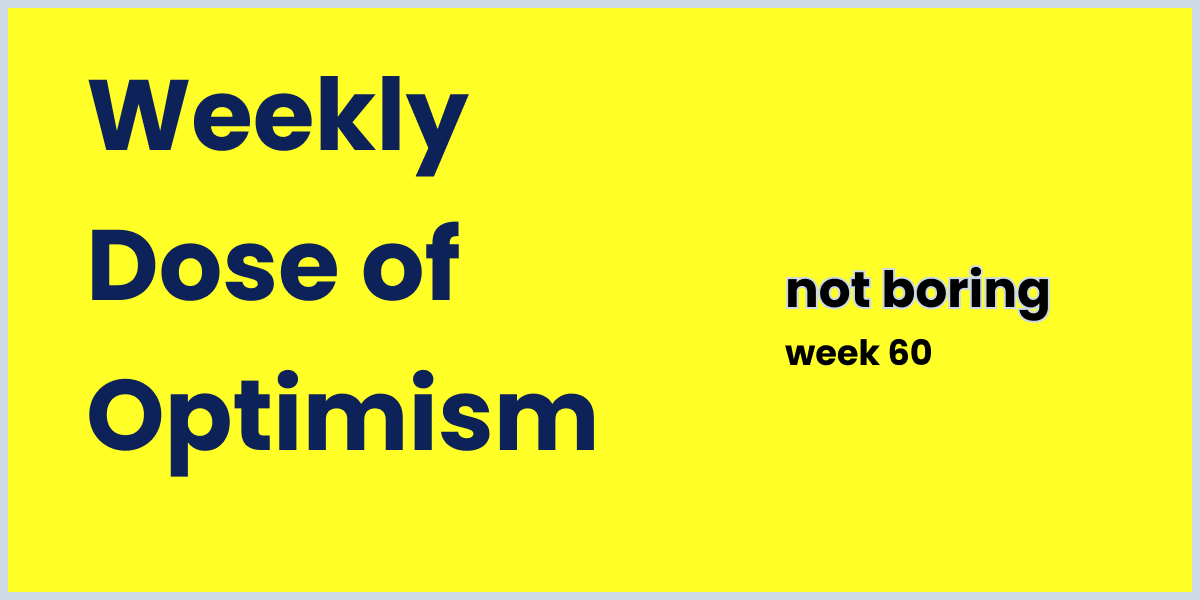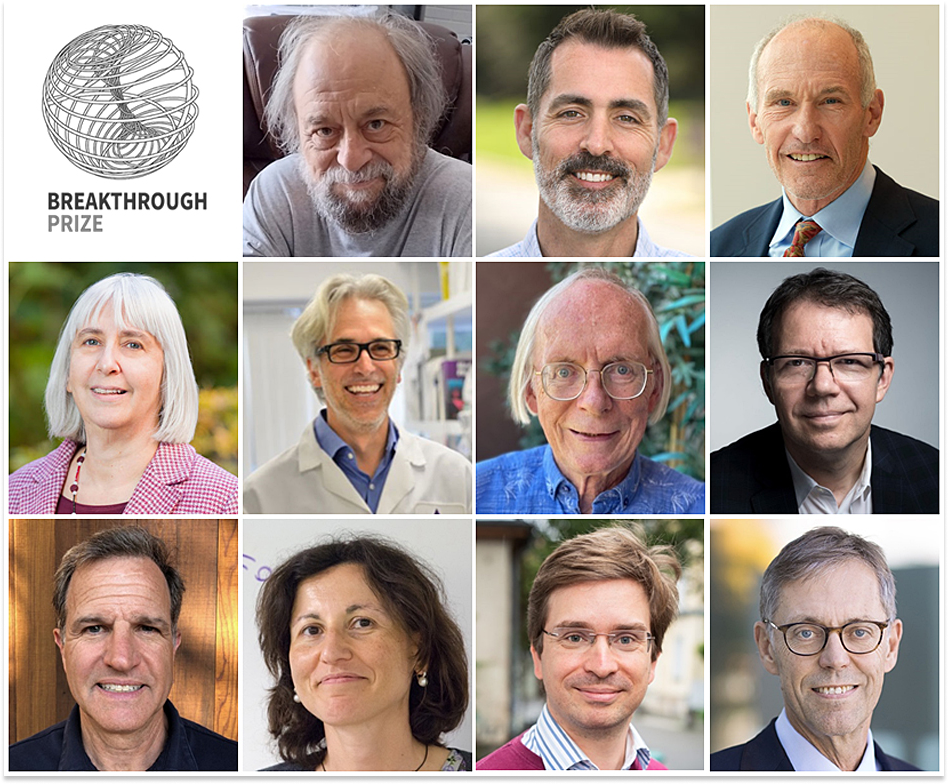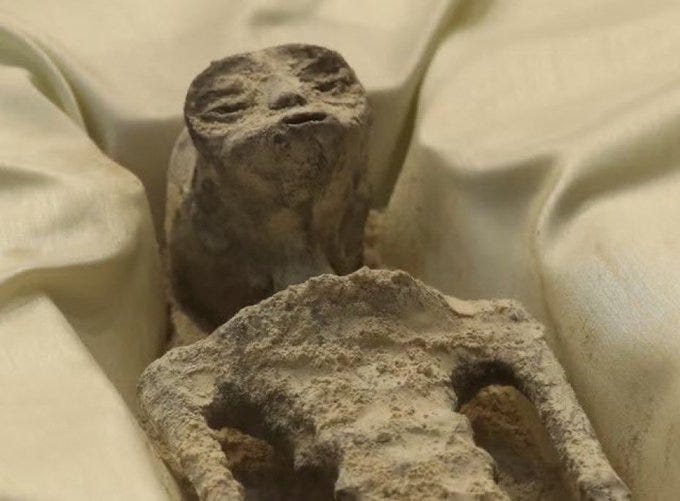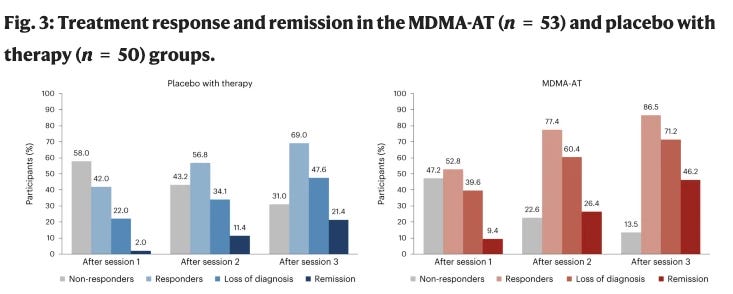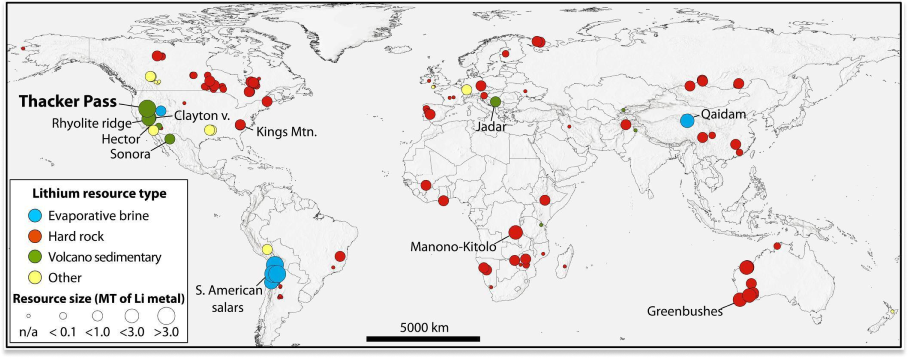Not Boring by Packy McCormick - Weekly Dose of Optimism #60
Weekly Dose of Optimism #60Breakthrough Prizes,K2-18 b, Building Stuff in America, Nougat, MDMA, Lithium TreasureHi friends 👋, Happy Friday and welcome back to our 60th Weekly Dose of Optimism. Packy and I will be together down the shore this weekend celebrating our mom’s Let’s get to it. The Weekly Dose is brought to you by… Write of Passage Speaking of our mom, we have a fun recent story about her and today’s sponsor, Write of Passage. Unbeknownst to us, she attended WoP's recent live session with Cultural Tudor. At some point during the end of the session, David Perell mentioned Packy’s name as a “success story.” Our mom, of course, proudly wrote into the Zoom chat that she was Packy’s mom…for all of the hundreds of attendees to see. Moms are funny. Anyway, registration for Write of Passage’s 11th Cohort is now officially open. You can sign up here. We’ve shared at length how the course totally transformed Packy’s career trajectory and why publishing on the internet is so powerful. We’ll leave it up to you to decide whether or not you’re ready to make the plunge. P.S. I think we have to get our mom the Write of Passage course for her birthday, right? (1) Breakthrough Prize Announces 2024 Laureates in Life Sciences, Fundamental Physics, and Mathematics
Every year, the Breakthrough Prize, known as the “Oscars of Science,” awards $3 million prizes for advances in Life Sciences, Fundamental Physics, and Mathematics. It’s a slightly splashier Nobel, and a celebration of the people behind the types of breakthroughs we celebrate in the Weekly Dose. We’re not smart enough to understand the contributions of the winners in Fundamental Physics (John Cardy and Alexander Zamolodchikov for their work in quantum field physics) or Mathematics (Simon Brendle for his “series of remarkable leaps in differential geometry), but 🫡 . The results of the three winners in the Life Sciences category are more tangible. Sabine Hadida, Paul Negulescu and Fredrick Van Goor, three scientists at Vertex Pharmaceuticals (which we wrote about in our piece on Atomic AI), developed a triple-drug combination, Trifakta, to fight cystic fibrosis. The disease impacts 100,000 people worldwide. A study published February this year showed that Trifakta can increase life expectancy from ~30 to over 80 years, or an average of 45.4 years. Ellen Sidransky, Andrew Singleton, and Thomas Gasser shared a second award for the discovery of two genes, GBA1 and LRRK2, associated with the risk of developing Parkinson’s Disease. Scientists now need to figure out how these genes cause the disease, and then how to, hopefully, stop them from doing so. Carl June and Michel Sadelain won the third Life Sciences award for “developing a CAR-T-cell immunotherapy treatment that stimulates patients’ own T cells to target and kill cancer cells,” which can lead to long-lasting remission for some cancers. Elliot has written about CAR-T for those who want to learn more. Humans rock. Congrats to the winners. As for the rest of you, you have one year until the 2025 Breakthrough Prize winners are announced, get to work. (2) Webb Discovers Methane, Carbon Dioxide in Atmosphere of K2-18 b From NASA
Humans rock. What about non-humans? You’ve probably seen this image go around a bit in the last couple of days. Journalist and self-proclaimed UFOlogist, Jaime Maussan, exhibited “two mummified specimens of extraterrestrial beings” to the Mexican congress. Experts scoffed, but at least the presentation launched a thousand memes. However, more credible space exploration organizations have released some evidence that points towards life beyond our planet. NASA's James Webb Space Telescope has detected carbon-bearing molecules, including methane and carbon dioxide, on the exoplanet K2-18 b, suggesting it may be a hycean (hydrogen-ocean) exoplanet with a hydrogen-rich atmosphere and potentially a water ocean surface. If the atmosphere is just the right thickness (too thick, and the greenhouse effect would make liquid oceans impossible, too thin, and the water would freeze or evaporate), we may have discovered a habitable planet 124 light years away. JWST may have also discovered inhabitants. Initial observations also hint at the presence of dimethyl sulfide (DMS), a molecule that is only produced by microbial life on Earth. The day after we got our hopes up about tiny aliens in Mexico, NASA dropped the potential for even tinier bacteria aliens on K2-18 b. Good time for Scully’s reminder: (3) Why Is It So Expensive to Build Stuff in America? Derek Thompson for Plain English
On the surface, that excerpt and the entire premise of this conversation between Derek Thompson and Brian Potter is not “optimistic.” It’s an analysis of why it takes so long and is so expensive to build things in America these days, at least vis-à-vis earlier periods in American history. Potter’s answer is pretty straightforward: regulatory burden has outpaced technological progress. Implied in that explanation of the problem are two solutions: decrease regulatory burden or increase the pace of technological progress. We’re not going to hold our breath on regulatory changes, but we (and Potter) are optimistic about some of the technological advancements in construction that could meaningfully increase the speed and/or decrease the cost of building things. Of note, Potter mentions advancements in material science, specifically in lumber — growing wood more effectively and basically genetically modifying out its blemishes. (Yes, we know it’s crazy that we’re more optimistic about wood technology than making a few common sense regulatory changes.) (4) Nougat: Neural Optical Understanding for Academic Documents Lukas Blecher, Guillem Cucurull, Thomas Scialom, Robert Stojnic
Facebook’s AI Research team strikes again. The LLMs we all know and use today, like OpenAI, have largely been trained on data obtained from crawling the web, scraping Wikipedia, and a few other digital-native sources of information. But there are billions or trillions of high-quality tokens, currently frozen in textbook pixels that are not LLM-ready — think an out-of-print chemical engineering textbook or some other scientific document, heavy in mathematical expression, that has not been digitized. All of that information would be super valuable to train LLMs on, especially as it pertains to producing LLMs that can tackle extremely complex mathematical and sceintific questions. To date, that info has been locked in hard-to-read PDFs. A new model, Nougat, aims to unlock the scientific knowledge in those documents by using an advanced form of Optical Character Recognition (OCR) for processing scientific documents into a markup language, and thus becoming digestible by LLMs. Its goal is to bridge the gap between human-readable documents and machine-readable text. The research team published Nougat’s results, which shows their approach has potential for not only extracting text from PDFs, scanned papers, and texbooks. (5) MDMA-assisted therapy for moderate to severe PTSD Mitchell et al, Nature
Packy here. Most people think Richard Nixon was a dick because of Watergate. I think Richard Nixon was a dick because he passed the 1970 Controlled Substances Act as part of the War on Drugs and classified psychedelics Schedule I substances. Schedule I substances are considered to have a high potential for abuse, no currently accepted medical use (in the United States), and are unsafe to use even if under supervision by healthcare professionals. That classification killed research into psychedelics such as MDMA (added to the list in 1985), psilocybin, and LSD, despite the fact that these drugs don’t fit the definition of Schedule I substances. Fortunately, research has picked back up in recent years, especially for the treatment of PTSD and treatment-resistant depression. In 2017, the FDA granted “breakthrough therapy” status to MDMA-assisted therapy as a treatment for PTSD. This most recent research, from MAPS, is the second of Phase 3 trials on the impact of MDMA plus talk therapy on PTSD. After one session, 9.4% of patients went into remission. After three sessions, 46.2% of patients went into remission. Only 13.5% of people didn’t respond — another 25% no longer met the PTSD diagnostic criteria and another 15.3% had at least a 10 point reduction in severity from baseline. Interestingly, the placebo group also improved, with 21.4% going into remission after three sessions with the placebo plus therapy. But MDMA was the clear winner. This New York Times article has more details on the study and the results. An astonishing 5% of American adults are affected by PTSD each year, and sadly, many believe that suicide is the only way out. MAPS is now planning to submit the results to the FDA as part of its application to market MDMA + talk therapy as a treatment for PTSD. If approved, it will provide PTSD sufferers with a real alternative. We need more psychedelic treatments approved ASAP. This is a great step. (Bonus) Lithium discovery in US volcano could be biggest deposit ever found Anthony King for Chemistry World
Packy again. I was fired up for this one when I saw it — the world’s largest lithium reserves discovered right in our backyard! 🇺🇸🔋🇺🇸🔋🇺🇸🔋🦅 Earlier this week, a story from Chemistry World suggesting that researchers had just discovered the world’s largest lithium reserves on in a volcanic crater on the Nevada-Oregon border swept (at least my little corner of) the internet. This was big news because the world is going to need a lot of lithium-ion batteries for electric vehicles and energy storage, but China controls most of the world’s lithium production and a growing percentage of the raw material. Home-grown lithium would mean both more resources and a more stable supply chain. Big time. I was getting ready to go full-steam on that story, then I did a little digging. The article was based on an August 30th paper in Science Advances titled Hydrothermal enrichment of lithium in intracaldera illite-bearing claystones. Some light reading and footnote clicking showed that the headline-making 20-40 million ton estimate was based on a 2020 paper in Minerals by Stephen Castor and Christopher Henry, and that people have known about the McDermitt caldera deposits for decades. They’ve even mined sections of the McDermitt caldera. What the August 30th paper, from Lithium Americas Corp., which is developing the site, showed was that, “The unique lithium enrichment of illite at Thacker Pass resulted from secondary lithium- and fluorine-bearing hydrothermal alteration of primary neoformed smectite-bearing sediments.” Essentially, it put forward a theory as to how the rarer lithium-packed illite clay formed. Very cool, but not the world-altering discovery its been made out to be. The good news here, as far as I can tell, is that this clay is packed with lithium (1.3 - 2.4 weight % of Li versus 0.4 weight % of Li in the more common magnesium smectite), and it’s in a sweet spot: close enough to the surface to avoid having to dig up too much rock, but deep enough that it hasn’t weathered away yet. Lithium Americas Corp. is going to begin mining the site in 2026. At the same time, we’ll need to ramp our lithium refining capabilities to turn all the raw material into batteries. With the word of caution that the story isn’t exactly as incredible as it sounds — we didn’t just discover all of this lithium — the larger point is exciting. There have been fears about our ability to mine and refine all of the lithium we need for the energy transition in an environmentally friendly way. But the market demand upped our exploration game, and it seems as if we’ve found a deposit in America that’s both huge and easier to mine than other sources. We still need to figure out refining capacity, but that’s a solvable problem. Just as we figured out fracking when people were calling for peak oil, we’ll figure out new ways to turn clay into batteries, because people rock. As Robert Zubrin wrote in The Case for Nukes:
Malthus keeps losing. That’s all for this week. We’ll be back in your inbox on Tuesday. Thanks for reading, Dan + Packy |
Older messages
Capitalism Onchained
Tuesday, September 12, 2023
What is the ideal state of crypto?
Weekly Dose of Optimism #59
Friday, September 8, 2023
Crusoe, Frontier, Moon Sniper, China Slowdown, Fury
Weekly Dose of Optimism #58
Friday, September 1, 2023
Inventing Sailboats, Cover Homes, AI Drones, Aalo, Incompetent Cynics
I, Exponential
Tuesday, August 29, 2023
Building Modern Cathedrals
Weekly Dose of Optimism #57
Friday, August 25, 2023
Manufacturing in America, Indian Moon, Time-Price, Creatine & Cancer, Microplastics
You Might Also Like
🔮 $320B investments by Meta, Amazon, & Google!
Friday, February 14, 2025
🧠 AI is exploding already!
✍🏼 Why founders are using Playbookz
Friday, February 14, 2025
Busy founders are using Playbookz build ultra profitable personal brands
Is AI going to help or hurt your SEO?
Friday, February 14, 2025
Everyone is talking about how AI is changing SEO, but what you should be asking is how you can change your SEO game with AI. Join me and my team on Tuesday, February 18, for a live webinar where we
Our marketing playbook revealed
Friday, February 14, 2025
Today's Guide to the Marketing Jungle from Social Media Examiner... Presented by social-media-marketing-world-logo It's National Cribbage Day, Reader... Don't get skunked! In today's
Connect one-on-one with programmatic marketing leaders
Friday, February 14, 2025
Enhanced networking at Digiday events
Outsmart Your SaaS Competitors with These SEO Strategies 🚀
Friday, February 14, 2025
SEO Tip #76
Temu and Shein's Dominance Is Over [Roundup]
Friday, February 14, 2025
Hey Reader, Is the removal of the de minimis threshold a win for e-commerce sellers? With Chinese marketplaces like Shein and Temu taking advantage of this threshold, does the removal mean consumers
"Agencies are dying."
Friday, February 14, 2025
What this means for your agency and how to navigate the shift ͏ ͏ ͏ ͏ ͏ ͏ ͏ ͏ ͏ ͏ ͏ ͏ ͏ ͏ ͏ ͏ ͏ ͏ ͏ ͏ ͏ ͏ ͏ ͏ ͏ ͏ ͏ ͏ ͏ ͏ ͏ ͏ ͏ ͏ ͏ ͏ ͏ ͏ ͏ ͏ ͏ ͏ ͏ ͏ ͏ ͏
Is GEO replacing SEO?
Friday, February 14, 2025
Generative Engine Optimization (GEO) is here, and Search Engine Optimization (SEO) is under threat. But what is GEO? What does it involve? And what is in store for businesses that rely on SEO to drive
🌁#87: Why DeepResearch Should Be Your New Hire
Friday, February 14, 2025
– this new agent from OpenAI is mind blowing and – I can't believe I say that – worth $200/month
